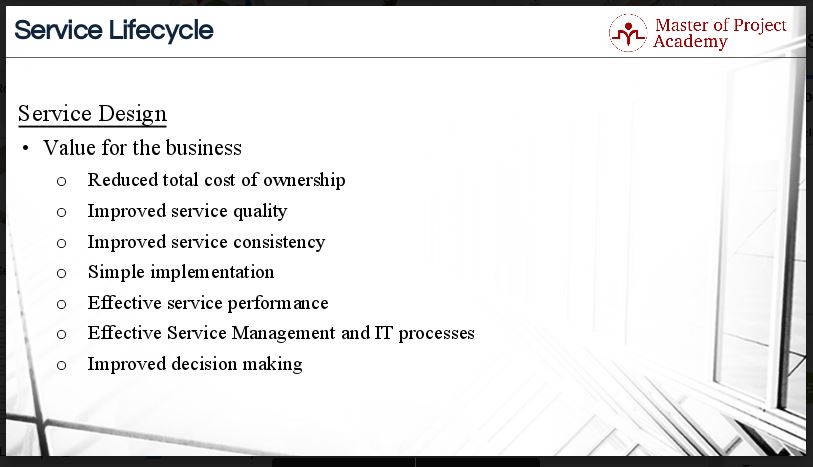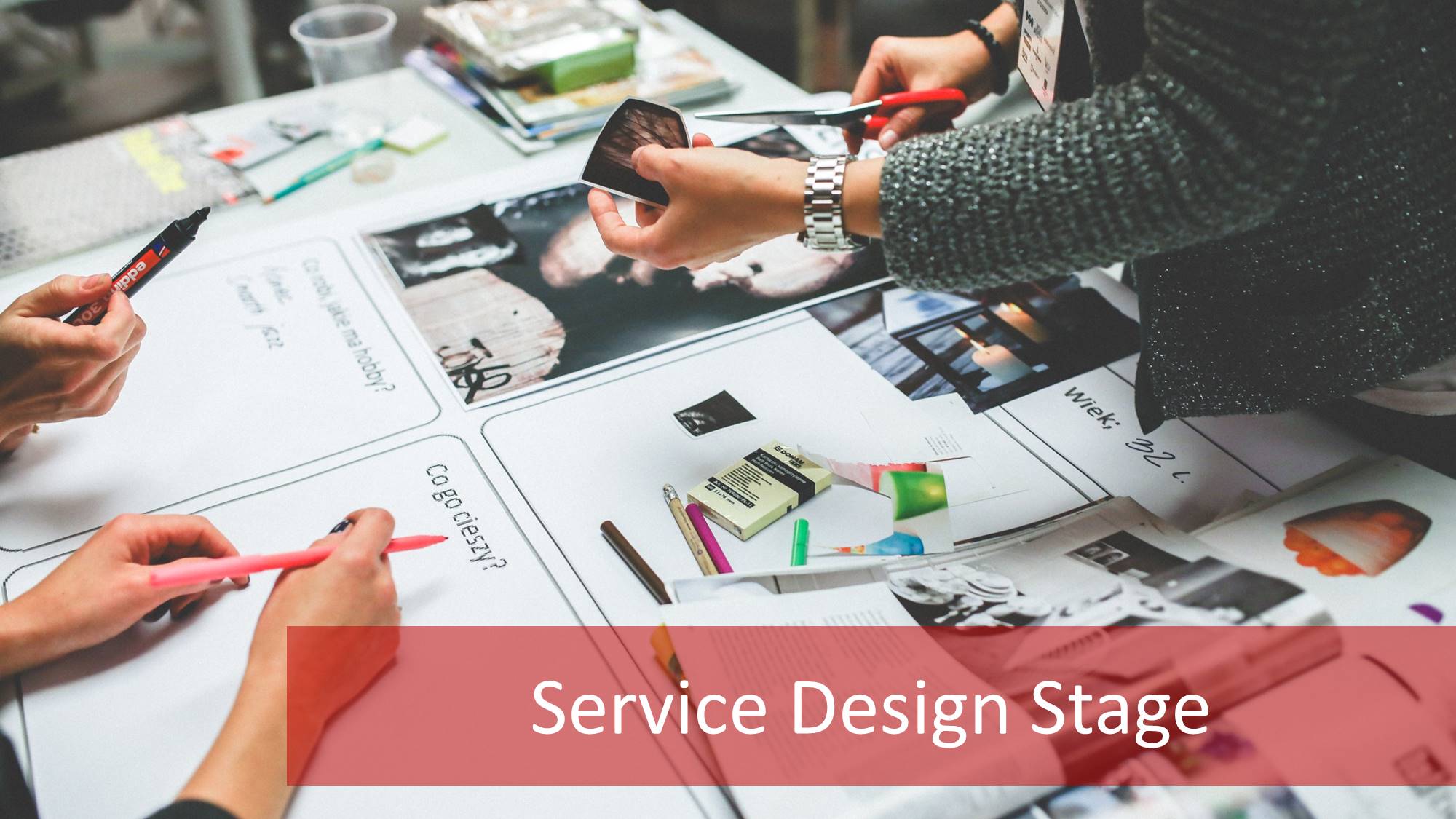The ITIL Service Lifecycle consists of five stages: Service Strategy, ITIL Service Design, Service Transition Service Operation and Continual Service Improvement. All of these are interlinked and without any one of these steps, a service can not be effectively developed and managed. The concept of the ITIL Service Lifecycle is explained in detail in the ITIL Certification Training. In this article, we are going to discuss the scope, goals, and value of the ITIL Service Design stage.
Scope of ITIL Service Design
The ITIL Service Design stage includes guidelines for design and development of services and for Service Management processes. In the first stage of the service lifecycle, the organization determines the IT strategy. The service management team needs guidelines for the design and development of the new services and these are developed in the ITIL Service Design stage. The service management team can use these guidelines to ensure that the developed IT strategy is achieved. Service management is discussed in more detail in the ITIL Overview Course.
ITIL Service design of new services
For instance, if your organization is a bank and if the strategy of your company is to provide mobile banking services to the customers of the bank, new services that will be presented over native applications of the bank might be needed. And these new services are designed in the Design stage of the service lifecycle.
Service design for existing services
Furthermore, existing services might require change or improvement based on the determined IT strategy. For instance, your organization may want to reduce cash withdrawal time from 4 seconds to 2 seconds. This strategy requires change or improvement of the existing withdrawal services or processes which are planned in the Design stage of the service lifecycle.
The Five Aspects of ITIL Service Design
There are 5 aspects of ITIL Service Design stage:
- New or changed services
- Service management systems and tools
- Technological architectures e.g. upgrading to a new website that is more aligned with current trends
- Required processes i.e. improvement of existing processes according to the IT strategy
- Methods and metrics for measurements. If you cannot measure, you cannot control or improve
Metrics are one of the key factors of the Design stage. Along with designing the technical components of the new service, metrics must be developed. With these metrics, the performance of the new service can be determined. In the continual improvement phase, metrics will help to identify points of pain. The service manager can also use metrics to determine whether set targets have been reached.
Goals of ITIL Service Design

ITIL Service design of innovative services
The ITIL Service Design stage aims to design suitable, winning and innovative IT services. In order to be able to compete in the market, an IT service organization should innovate progressively. Also, it should produce useful and winning services for its customers. If customers find a better serving organization, they will switch to that company easily.
Let’s take your mobile operator as an example. You receive a number of services and you pay money for the services you get. If another mobile operator will be providing better services that will meet your expectations, you would think to switch your mobile operator.
In order to design suitable and innovative IT services, the Design stage covers the design of architectures, processes, guidelines and documents. If you will be designing innovative services additional architecture and infrastructure needed in the organization should be included in the ITIL Service Design stage. Also, processes, guidelines, and documents that will show the way of creating suitable and innovative IT services will be within the scope of the Design stage.
Settlement of business requirements in ITIL service design
Another goal of ITIL Service Design stage is the settlement of actual and future business requirements. Each company has a business vision and strategy. Companies develop IT strategies to achieve their visions and strategies. These strategies will include business requirements such as accomplishing a money withdrawal process of 5 seconds from an ATM or answering a customer call in less than 8 seconds. The Design stage of the service lifecycle aims to meet these kinds of actual and future business requirements of the organization.
Objectives of the ITIL Service Design stage
Integrated ITIL service design
In order meet the business goals, new services might be required. The ITIL service design stage is where these new services are designed. When a service is designed, its implementation, integration, and impacts should be considered comprehensively throughout all the stages of the service lifecycle.
Let’s say that you designed a service that meets the goals of the organization. If this service cannot be implemented or put on live environment in the other stages of the service lifecycle, it won’t be serving properly for the organization. Therefore, it should be aimed to design integrated, effective and efficient services.
Identifying and management of risks in ITIL service design
Risks of services or processes should be identified during the ITIL Service Design stage. For instance, if there is an outage risk of a website during peak times, causes of the risks should be identified. In fact, these causes should be tried to be eliminated first. If risks cannot be eliminated, response actions should be planned in order to overcome the impacts of risks when they occurred.
Secure ITIL service design
The third objective is the concept design of secure and failsafe IT infrastructures, environments, and applications. When providing services, security of data must be ensured and failsafe IT infrastructures should be implemented. For example, banks must have a very secure IT infrastructure that cannot easily be hacked. An unprotected environment will be unacceptable for the customers of the bank. Therefore, security must be ensured and IT infrastructure should be planned accordingly during the ITIL Service Design stage.
Also, periodic backups, maintenance of data etc. should be planned in order to ensure failsafe IT infrastructure. Let’s say there has been a corruption of data in the system, if you have a failsafe environment, you can turn back to a healthy state from a backup.
Measures and metrics in ITIL service design
In order to measure the performance of services and processes, metrics and methods should be developed during ITIL Service Design stage.
Value of the ITIL Service Design Stage

ITIL Service design reduces total cost of ownership
The Design stage reduces the total cost of ownership in the organization. A well-designed service or process means that the planning, implementation, and management of the service and process will be easier. This modular structure will help to reduce total cost of ownership respectively.
Improved service quality through ITIL service design
If you design a service end-to-end before implementing it right away, you will be able to see its impacts and suitability for the organization. You will be able to see risks and impacts during the design stage and this will help you to design your services and processes based on these restrictions. This will improve the service quality.
Improved service consistency through ITIL service design
Proper ITIL service design will improve service consistency.
Simple implementation through ITIL service design
Since the designed services or processes are designed based on suitability with the other services and processes and also other service lifecycles, the implementation of the designed services will be easier. Better service design will ensure effective service performance and effective service management and IT processes as well.
Improved decision making through ITIL service design
During ITIL service design, you will be able to see effects, risks, impacts and possible outcomes of services and processes before implementing a service. Since you will have an overview of how a service or process will fit into the overall structure of the organization, this will ease faster, better and improved decision making in the organization.
Review by: Everett Dixon


17 thoughts on “ITIL Service Design: How Does Service Design fit into the ITIL Service Lifecycle?”
Comments are closed.